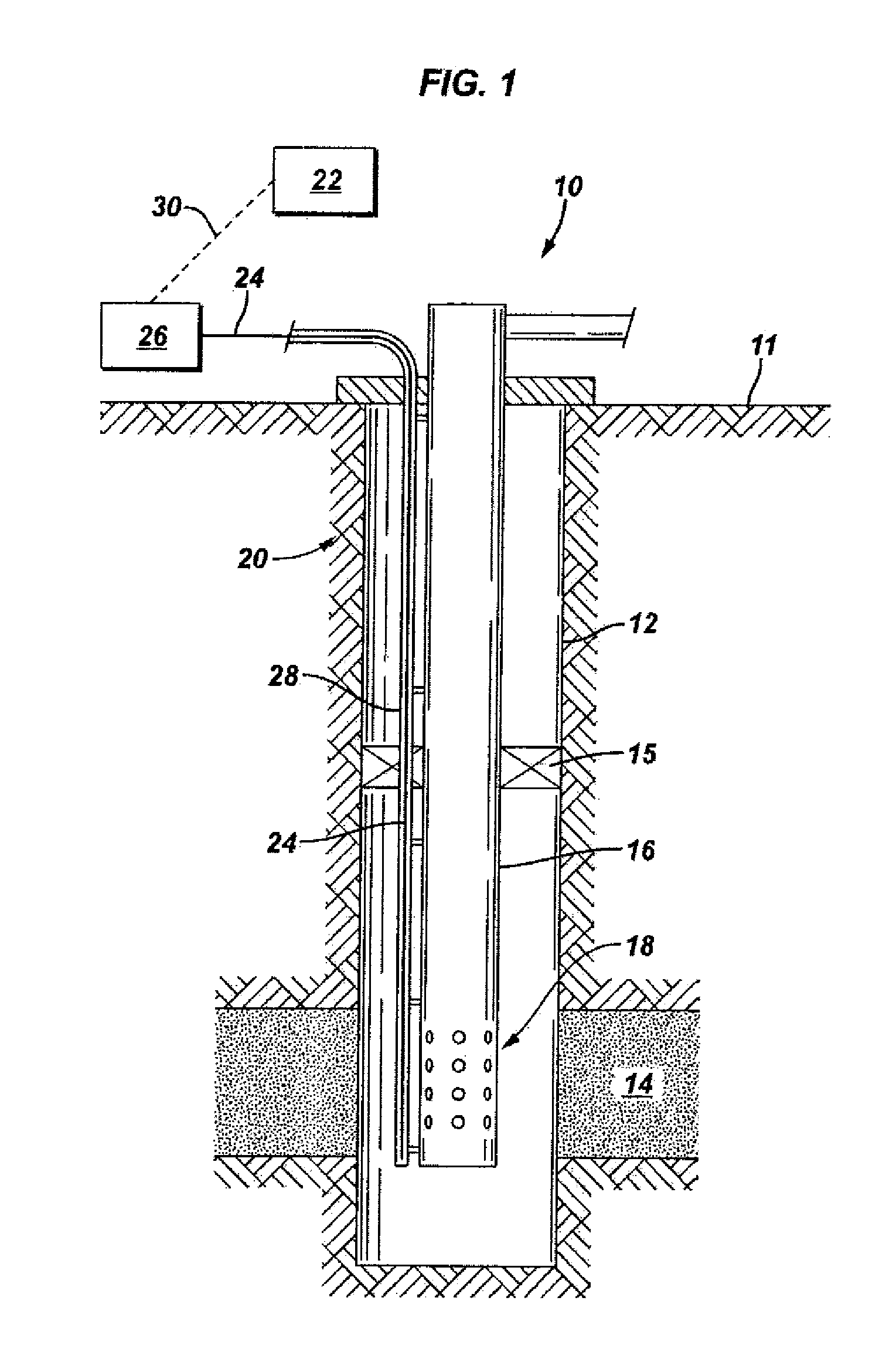System and method to interpret distributed temperature sensor data and to determine a flow rate in a well
a temperature sensor and distributed technology, applied in the field of system and method to interpret temperature sensor data in a well, can solve the problems of manual analysis, high labor intensity of operators, and high labor intensity of operators, and achieve the effect of reducing labor intensity and labor intensity
- Summary
- Abstract
- Description
- Claims
- Application Information
AI Technical Summary
Problems solved by technology
Method used
Image
Examples
Embodiment Construction
[0018]FIG. 1 illustrates an embodiment of a system 10 that is the subject of this invention. A wellbore 12 extends from the surface 11 into the earth and intersects a formation 14 that contains fluids, such as hydrocarbons. The wellbore 12 may be cased. A tubing 16, such as a production tubing, extends within the wellbore 12. A packer 15 provides a seal and isolates the formation 14 from the region above the packer 15. Depending on whether the wellbore 12 is used as an injector well or as a producing well, fluid is either injected into the tubing 16 and into the formation 14 or fluid is produced from the formation 14 and into the tubing 16. In either case, fluid enters or exits the tubing 16 through flow paths in the tubing 16, such as the ports 18 illustrated in FIG. 1. The injection and production of fluids may also be aided by artificial lift mechanisms, such as pumps or gas lift valves. Perforations (not shown) may also be made in the wellbore 12 at the formation 14 in order to ...
PUM
| Property | Measurement | Unit |
|---|---|---|
| depth | aaaaa | aaaaa |
| flow rate | aaaaa | aaaaa |
| temperature | aaaaa | aaaaa |
Abstract
Description
Claims
Application Information
 Login to View More
Login to View More - R&D Engineer
- R&D Manager
- IP Professional
- Industry Leading Data Capabilities
- Powerful AI technology
- Patent DNA Extraction
Browse by: Latest US Patents, China's latest patents, Technical Efficacy Thesaurus, Application Domain, Technology Topic, Popular Technical Reports.
© 2024 PatSnap. All rights reserved.Legal|Privacy policy|Modern Slavery Act Transparency Statement|Sitemap|About US| Contact US: help@patsnap.com










